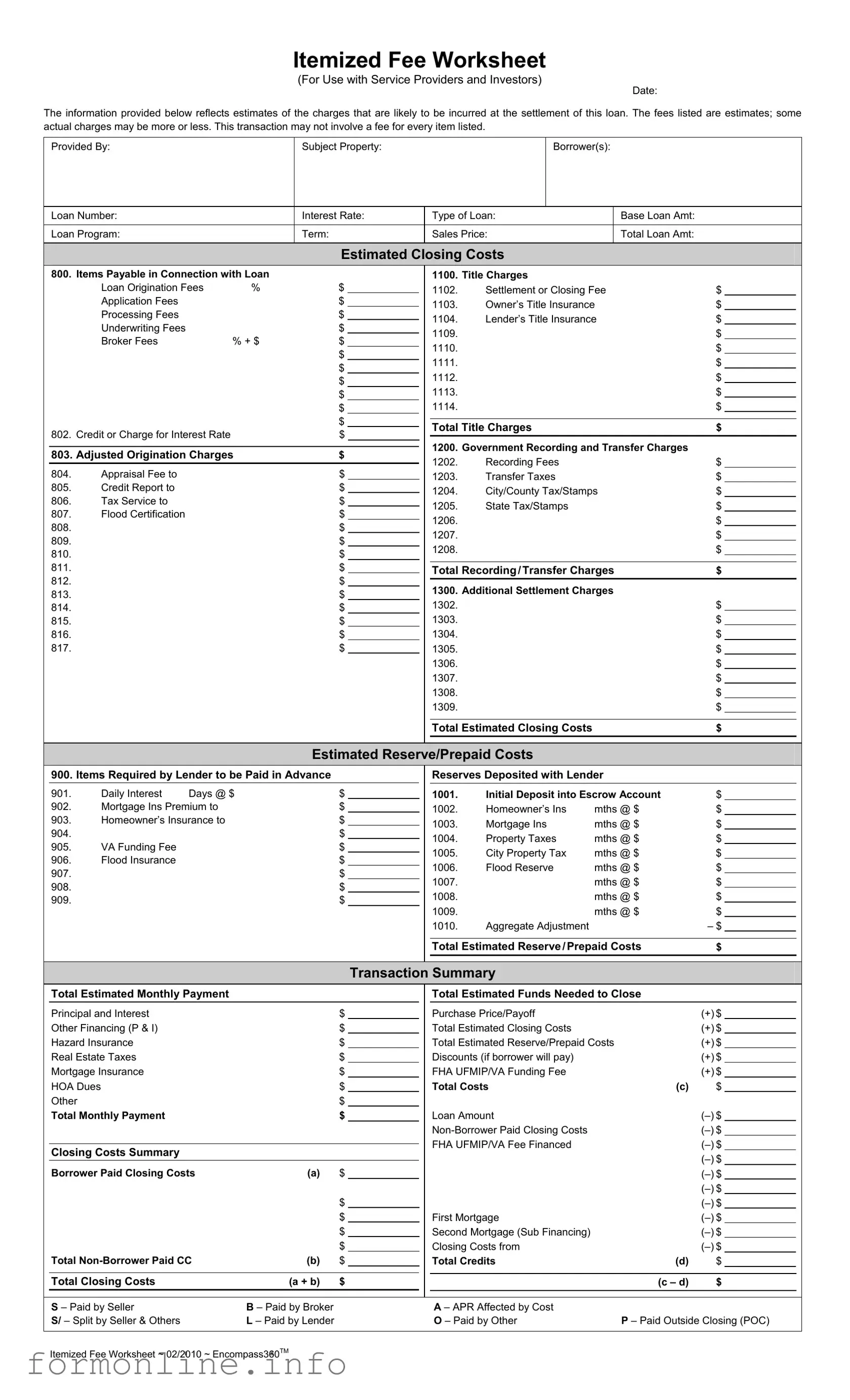The Loan Estimate form is a document that provides borrowers with a clear overview of the estimated costs associated with their mortgage loan. Similar to the Fee Worksheet, it outlines various fees, including loan origination fees, title insurance, and closing costs. Both documents aim to give borrowers an understanding of their financial obligations before finalizing the loan. The Loan Estimate must be provided within three business days of receiving a loan application, ensuring borrowers have ample time to review their potential expenses.
The Closing Disclosure is another important document that shares similarities with the Fee Worksheet. This form is given to borrowers at least three business days before closing on a mortgage. It details the final loan terms and closing costs, allowing borrowers to compare these figures with those provided in the Loan Estimate. Like the Fee Worksheet, the Closing Disclosure breaks down various charges, including title fees and government recording fees, providing transparency in the closing process.
The Good Faith Estimate (GFE) was previously used in real estate transactions to summarize the costs associated with a mortgage loan. While the GFE has largely been replaced by the Loan Estimate, it shares a similar purpose with the Fee Worksheet. Both documents present an itemized list of expected fees and charges, helping borrowers to understand the financial implications of their loan. The GFE was designed to promote transparency and allow borrowers to shop around for the best mortgage terms.
The HUD-1 Settlement Statement is a document that was commonly used in real estate transactions before the implementation of the Closing Disclosure. It provides a detailed account of all charges and credits associated with a real estate transaction. Much like the Fee Worksheet, the HUD-1 outlines various fees, such as title charges and recording fees. Although it has been largely phased out, it remains similar in function by ensuring that borrowers are aware of the costs involved in closing their loan.
The Itemized Statement of Settlement Charges is a document that lists all costs related to the closing of a real estate transaction. It is similar to the Fee Worksheet in that it provides an itemized breakdown of fees, including lender charges and third-party fees. This document serves to clarify the financial obligations of the borrower, ensuring they understand what they are paying for at closing. Both documents are designed to promote transparency and assist borrowers in budgeting for their loan expenses.
The Pre-Closing Disclosure is a document that provides a summary of the closing costs and terms of a mortgage loan, similar to the Fee Worksheet. It is typically provided to borrowers shortly before the closing date, allowing them to review the final terms of their loan. Both documents aim to ensure that borrowers are fully informed of their financial commitments. The Pre-Closing Disclosure helps to confirm that all parties are on the same page regarding the costs associated with the transaction.
The Employment Verification form is a key document often used in various professional settings, ensuring that employers can substantiate an individual's employment status. For those looking to explore this subject further, the thorough guide on Employment Verification forms offers valuable insights and resources to navigate the verification process effectively.
The Estimated Closing Costs form is another document that resembles the Fee Worksheet. It provides an overview of the anticipated costs that a borrower will incur at closing. Like the Fee Worksheet, this form breaks down various charges, including title fees and government recording fees. The purpose of both documents is to give borrowers a clear understanding of the financial responsibilities they will face when finalizing their mortgage loan.
